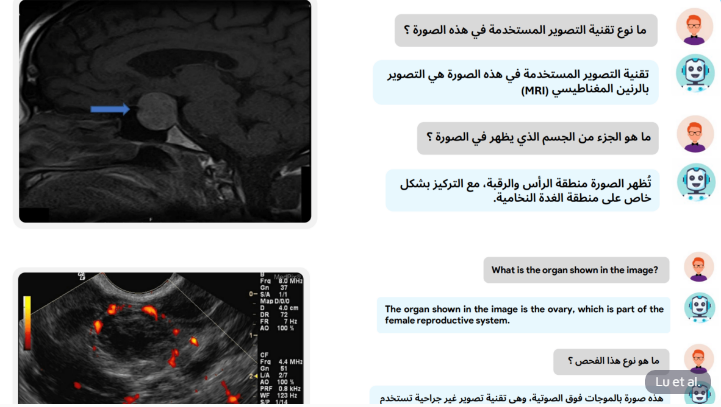Researchers at Mohamed bin Zayed University have developed a breakthrough artificial intelligence model called BiMediX2 that is capable of understanding and interpreting medical images bilingually in English and Arabic. This research result is a milestone in the field of medical image analysis, especially in processing Arabic medical images, showing significant advantages, and its accuracy far exceeds existing technologies. BiMediX2 is not only able to process multiple types of medical images, such as X-rays, MRI scans, and microscopy images, and provide detailed descriptions, but it can also answer various questions about the image content, providing strong support for medical diagnosis and research.
A study led by researchers at Mohamed bin Zayed University has launched an artificial intelligence model called BiMediX2, a system that can understand and interpret information in medical images and supports bilingual English and Arabic Analysis, which performs particularly well when processing Arabic content.
BiMediX2 is the first artificial intelligence system capable of analyzing and describing medical images in English and Arabic. The system can process a variety of medical images, including X-rays, MRI scans and microscopy images, and provide detailed descriptions while answering questions about the image's content. This model not only improves the accuracy of translation in understanding medical images, but also significantly enhances Arabic processing capabilities.

According to the technical report, BiMediX2 performed well in comparative tests with existing technologies, improving the translation effect of English content by 9% and the translation effect of Arabic content by 20%. Behind this achievement is the team's massive training on 1.6 million pieces of medical text and image data, ensuring accurate conversion between the two languages.
The excellent performance of BiMediX2 is due to the innovation of its underlying architecture. The system is based on the Llama3.1 architecture and GPT-4o, and is especially optimized for the medical field. By combining with Vision Encoder and Meta Llama3.1, BiMediX2 enables seamless bilingual medical image analysis. In tests, it outperformed GPT-4o in identifying incorrect medical information.
Although the performance of BiMediX2 is encouraging, the researchers emphasize that the system is still limited to research use and has not yet entered clinical application. Like all artificial intelligence systems, BiMediX2 may make errors or generate inaccurate information. Therefore, the research team has released the model on Hugging Face and launched a bilingual benchmark called BiMed-MBench to test the performance of similar systems.
BiMediX2 is an important innovation in the field of medical image analysis, especially in the processing of bilingual medical images and translation. Although it has not yet been applied clinically, the research results of this system bring more efficient and accurate artificial intelligence application prospects to the medical industry.
The emergence of BiMediX2 marks a major step forward in the field of medical image analysis, and its bilingual capabilities and high accuracy are expected to significantly improve medical diagnosis and cross-cultural medical communication. Although it is still in the research stage, its future application prospects are broad, and it is worth looking forward to its further development and improvement in clinical practice.